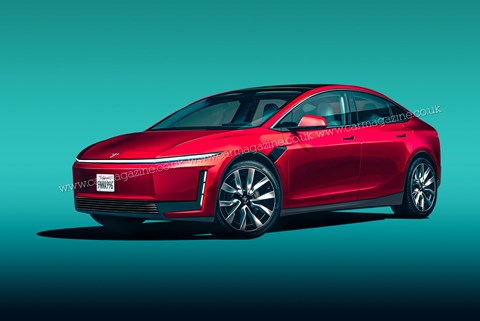► How China is winning at cheap EVs
► Tesla and others struggle to keep up
► The economics of low-cost electric cars
Is the tide turning against the EV start-ups aiming to topple established car makers? A few years ago, it seemed that Tesla, Rivian and other arch innovators had the world in their grasp; unencumbered by legacy businesses, industrial footprints and the pesky need to switch from fossil fuels to volts, they had the inspiration and clean-sheet plan to dominate in a carbon-crunched world.
A few short years later, conditions are much tougher. The appetite for electric cars has stalled in many western countries, economies are tough post-Covid and there’s a new threat from a quarter that was once unimaginable: China. No wonder Elon Musk’s dithering over plans for a smaller Tesla Model 2 EV, after announcing a drop in production and transaction prices (the average Tesla sale value has fallen from $50k in 2022 to $39k this spring). It’s not alone: Rivian earlier this year posted a $5.4bn annual loss and cut 10% of its staff. It’s tough being a disruptor.
Are they sleepwalking into something that business schools label ‘the innovator’s dilemma’? First identified by academic Clayton Christensen, it’s the process where an arch disruptor innovates so successfully that it wins plaudits, market share and profits by identifying a new market – only to then stagnate as the new kid on the block becomes the norm and is itself targeted by the next wave of entrepreneurs.

Many successful companies fall prey to the dilemma as they mature, lose focus and forget agility: think Nokia or Kodak. Could the same thing happen to Tesla and other EV wannabes? Probably not any time soon, if plans for the Model 2 (above) come good. But there’s one business opponent that’s hellbent on exploiting Tesla’s maturation – and it’s China’s burgeoning electric-car sector.
The giant in the room: China’s EV plans gradually reach maturation
Research giant Gartner forecasts that half of the world’s EVs will hail from China by the end of next year, up from a quarter in the first half of 2022. ‘This will imply a significant reduction in sales by incumbent leaders, particularly in China, as people will shift from petrol- and diesel-fuelled vehicles built by the incumbents to Chinese-made EVs,’ its analysts note.
Thanks to a long-term industrial strategy funded by the communist government, China has cornered the supply of raw materials and production of the batteries required for electrification: 70 per cent of global battery cell manufacturing takes place in China, and BloombergNEF’s annual lithium-ion battery price survey suggests that the country’s production cost of $126 per kWh undercuts production costs in the US by 11 per cent and Europe by 20 per cent. It’s a stark reminder that geopolitics, trade deals and imperial strategy have been deliberately aligned to secure China’s competitive advantage.
China: a fast follower in high-tech manufacturing
It’s an endless game of cat and mouse, as manufacturers from east and west seek an edge. Automotive consultancy Bernstein observes that Chinese newcomers are watching technical innovations, especially around injection moulding, battery integration and integrated stamping, to mimic the very latest production practices from the likes of Tesla and the German premium brands: ‘Chinese competitors have adopted a “fast follower” strategy and are looking to quickly replicate Tesla’s best practices, including both production and design.’
What does all this mean? At the time of writing, four of the 10 cheapest electric cars on sale in the UK today are from Chinese producers. Sobering when you realise that these first cars are merely the warm-up act.
The Chinese electric cars you can buy today